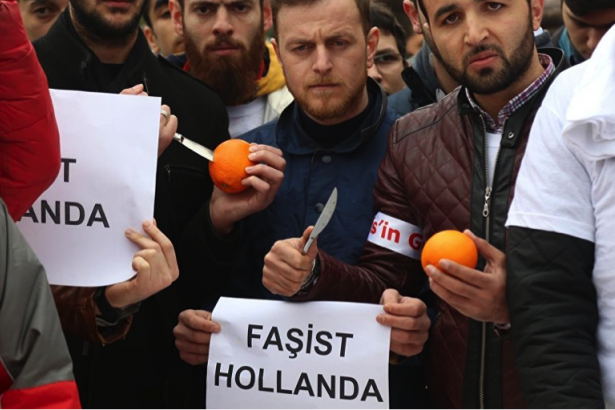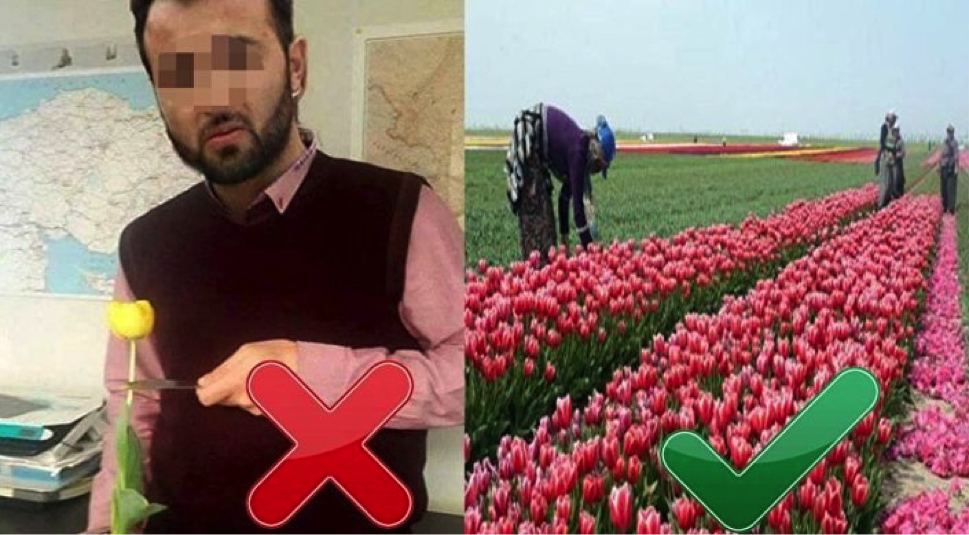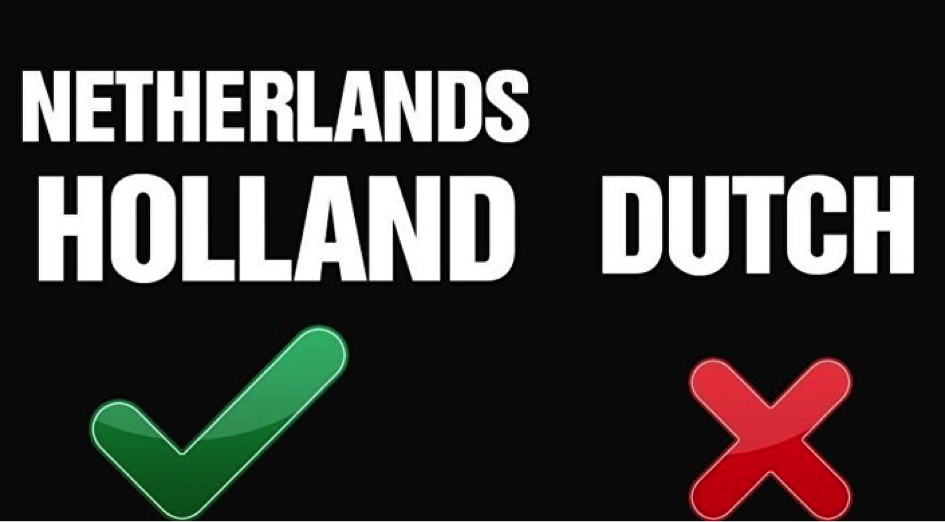Turkish media prepared a guide to protest the Netherlands

As the rising tensions between Turkey and the Netherlands were protested in various platforms from social media to the streets, the Turkish media prepared a guide to prevent possible blunders committed by the demonstrators.
The guide released with a headline of "Read this news before protesting! Here is the guide to 'protest' the Netherlands", it is stated that "it is important to be able to protest without vandalising and swearing. Here are the points to consider for the Netherlands protests."
Referring the previous international crises, it is emphasised in the report that:
"…Just as in the previous international crises, some ‘‘confusions’’ has occurred in the protests against the recent crisis. Hence, we have prepared "a guide to protest the Netherlands" to prevent these kinds of confusions. Here’s what you need to know before you protest the Netherlands…"
According to daily Sözcü, 8 points the protesters should consider while protesting the Netherlands are as follows:
'PROTEST THE CURRENT DUTCH GOVERNMENT, NOT THE NATION OR THE CITIZENS'
The first thing you need to know is that you should criticise and protest the politicians and bureaucrats who currently rule the Dutch state, not the Dutch people or the Dutch nation.
PAY ATTENTION TO BOTH HORIZONTALITY AND VERTICALITY, AND COLOUR SEQUENCES IN THE FLAG

‘‘Pay attention to both horizontality and verticality, and the colour sequences in the flag.’’
The Dutch flag consists of horizontal, parallel, red, white and blue colours. It is very important to be ‘horizontal’; because there is a ‘vertical’ flag of France with the same colours. The sequence of colours is also significant. The reason behind its significance is that there are these three colours (or a few of them) on the flags of many European states.
‘THE LOCATION OF ROTTERDAM: DO NOT CONFUSE IT WITH THE NAMESAKE TOWN IN NEW YORK OF THE USA’

‘The location of Rotterdam: Do not confuse it with the namesake town in New York of the USA’’
Firstly, a brief overview of Rotterdam where the historic crisis has been experienced. Rotterdam is located in the southwest of the Netherlands. It is the second largest city of the Netherlands after Amsterdam regarding its population, but the surface area of Rotterdam is bigger. Rotterdam has the largest port in Europe.
Rotterdam is the access point of cargos delivering from all over the world from the North. The city takes its name from the Rotte River. In this city, where approximately half of the population (by January 1, 2017; 584,046 people) is not of Dutch origin, a remarkable Turkish population consisting 7.8 percent (45,457 people) of total population also lives. Rotterdam’s national slogan is: Sterker door Strijd which means ‘Stronger through Efforts’. It was observed on social media that some users confused Rotterdam with the namesake town in New York of the USA. Rotterdam in question is at the heart of the Netherlands.
‘NO NEED TO SQUEEZE ORANGES: THE REASON OF THE ORANGE IS NOT THE FRUIT, BUT THE SURNAME OF THE DYNASTY, ORANGE-NASSAU’

‘The reason of the orange is not the fruit, but the surname of the dynasty which is Orange-Nassau’
You do not need to squeeze oranges in the protests because the orange we eat is not related to the Netherlands. The Netherlands national team’s orange colour stems from Orange-Nassau which is the dynasty’s surname, not from the fruit one.
Orange, which means ‘orange’ (colour one), stems from the surname of the dynasty, which still maintains its existence in the Netherlands. The Orange Dynasty takes its name from Willem Van Oranje, the first and the most significant leader of the Eighty Years’ War, which was a revolt against the Spanish Habsburgs and resulted in the Dutch Independence with the 1648 Peace Treaty of Westphalia.
Namely, at the end of the Eighty Years’ War in 1648, the United Provinces, formed a basis of today’s Netherlands, was formally established. Oranje was born in 1533 from the House of Nassau as the Count of Nassau-Dillenburg which is located in Germany at the present time. In 1554, he became the Prince of Orange, of the current French borders (thus, he received a ‘van Oranje’ title), and therefore became the founder of the House of Orange-Nassau and the Dutch Royal Family. Willem Van Oranje, killed by an assassination in 1584, could not see the independence of the Netherlands in 1648.
‘DO NOT CONFUSE WITH THE PRESIDENT OF FRANCE HOLLANDE AND HOLLAND’

Do not confuse with the President of the French Republic Hollande and Holland’
On the social media, Françoise Hollande, the President of the French Republic, was criticised on twitter especially on the first day of the rising tension between Turkey and Holland. Yet, the French President’s only relevance with the crisis is that the pronunciation of his surname is similar to the pronunciation of the word, "Holland". The name to be shown reaction is the Dutch Prime-Minister Mark Rutte.
‘WATCH OUT FOR THE TULIPS CAUSE THEIR HOMELAND IS ASIA
’
Watch out for the tulips, because their homeland is Asia.’
Do not protest the Dutch tulips, because their homeland is Asia. These tulips were relocated to Europe through Anatolia (in other words the Ottoman Empire) as a result of Sultan Suleyman I’s gift to the King of the Netherlands in the 16th Century.
THE NETHERLANDS, DUTCH, OR HOLLAND?

‘The Netherlands, Dutch, or Holland?’
There is also an important point for the protest texts in English…There are two usages of the country you protest: ‘‘the Netherlands’’ and ‘‘Holland’’.
The real name of the country composed of twelve unified provinces is the Kingdom of Netherlands. Although the word ‘‘Holland’’ basically refers the provinces of the North Holland (Noord-Holland) and the South Holland (Zuid-Holland), it has been used as a name of the country in time.
The word ‘‘Dutch’’ refers to the people living in the Netherlands and the language used in the country.
‘THE MOST IMPORTANT POINT IS TO WATCH YOUR LANGUAGE: THE RULERS ARE TEMPORARY, BUT THE PEOPLES ARE ETERNALLY PERMANENT AS THE PREVIOUS CRISES SHOWED US.’
First of all, the manner in both your critiques on social media and the protests in the streets is very important. You can protest the current government in the Netherlands without insulting, vandalising, and without burning flags. As previous crises (with Russia, Italy and France) have taught us, the rulers are temporary, but the peoples are eternally permanent."
The supporters of the ruling Justice and Development Party (AKP) and Turkish nationalists had previously attempted to protest irrelevant foreign countries due to the rising tensions between Turkey and other countries. For instance, a Turkish nationalist group had thrown eggs to the Netherlands Consulate by mistake (confusing the flags of two countries) to protest the Russia in 2015. The protestors had previously attacked a Korean tourist group in Istanbul to protest China due to the tensions between the Chinese government and the Eastern Turkestan (Uyghurs).




